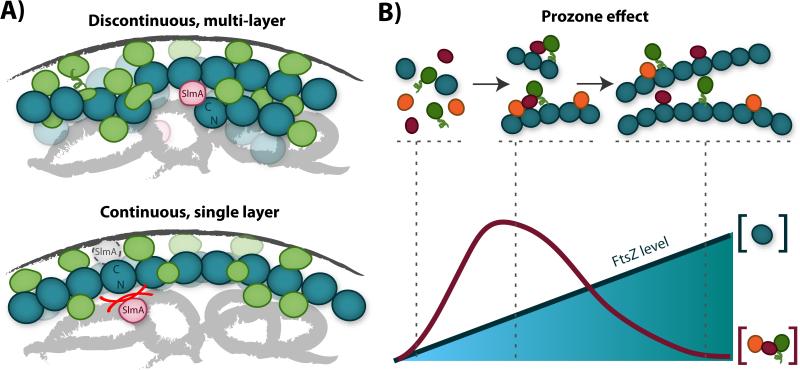Figure 4.
Influence of FtsZ filament structure on signaling. A: Signaling advantages of the discontinuous, multi-layer Z-ring structure (upper) compared to a model structure with a single, continuous layer (lower). The discontinuous, multi-layer structure can accommodate larger numbers of binding partners (green and pink) within the same region of membrane surface area (dark gray curve). Furthermore, the discontinuous structure allows ample room for proteins such as SlmA (pink) to bind both the nucleoid DNA (light gray swirls) and the C-terminal face of FtsZ (teal), while the single-layer structure sterically hinders this interaction (lower, red lines). B: Formation of signaling complexes on FtsZ filaments is described by the prozone effect [89]. As overall FtsZ levels rise (lower, teal line and shading), levels of polymerized FtsZ also rise (upper, teal circles). At a fixed level of interacting signaling partners (orange, magenta, green), the likelihood of forming a complete complex with all three partners first increases, then decreases, with increasing FtsZ levels (lower, magenta line). As such, FtsZ filament organization can control complex formation, and random fluctuations in FtsZ levels may prevent robust signaling. If FtsZ primarily guides the formation of signaling complexes at the membrane, then the multi-layer Z-ring structure provides a mechanism to buffer FtsZ levels at the membrane while overall FtsZ levels vary.

